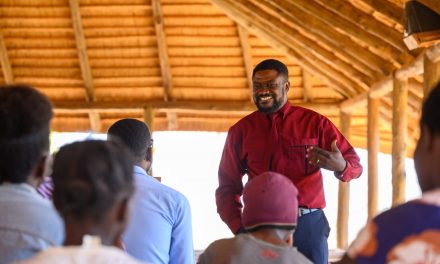

This article was originally published here.

Subscribe to Our Newsletter
Get all the latest original content delivered straight to your inbox!
In bygone eras, relationships were nurtured slowly and deliberately. Neighbors exchanged pleasantries on quiet streets, and personal histories unfolded over time through shared meals, casual conversations, and community gatherings. In such environments, individuals revealed themselves gradually, allowing others to understand their character through face-to-face interactions and the subtleties of nonverbal communication. Today, however, the rise of the Internet and social media has revolutionized how we form impressions of one another. With the click of a button, detailed personal information is instantly accessible, often prompting hasty evaluations that can obscure the true nature of an individual. This new paradigm of digital exposure carries significant consequences for ministry, where the cultivation of genuine human connection is central to providing compassionate spiritual care.
A Shift in the Nature of Human Connection
In traditional settings, getting to know someone was an organic process marked by gradual disclosure. An acquaintance’s personality emerged slowly as interactions accumulated—a shared smile at the local market, a conversation during a neighborhood event, or a moment of vulnerability during a one-on-one encounter. This pace allowed room for the natural evolution of trust and a more comprehensive understanding of the person beyond first impressions.
By contrast, the digital era offers a barrage of personal details in a highly condensed form. Social media platforms like Facebook, Instagram, Twitter, and LinkedIn encourage users to present curated snapshots of their lives. A single post, photograph, or comment can quickly become the basis for an immediate opinion. These digital interactions, while efficient for communication, often lack the depth and nuance of in-person encounters. The result is an environment where individuals are frequently reduced to a set of carefully managed images and statements, which may only capture a fragment of their true identity.
The Consequences of Instantaneous Evaluations
One of the most critical challenges in today’s digital landscape is the ease with which we form rapid opinions about others. The abundant availability of personal information online means that we no longer need to invest time in understanding someone’s full story. Instead, we are often tempted to rely on surface-level details to form our assessments. This tendency to judge quickly can lead to misunderstandings, as digital profiles rarely convey the complexity of a person’s experiences, values, and emotions.
The speed of digital communication has redefined how we relate to one another, encouraging a form of evaluation that bypasses the traditional, measured process of getting to know someone. When a person’s online presence is the primary basis for judgment, we risk overlooking the richness of their life story, reducing them to a series of isolated data points. Such an approach not only oversimplifies individual identity but also fosters an atmosphere in which more subtle human qualities are ignored or misunderstood.
The Impact on Spiritual Ministry
For those involved in ministry, these shifts in social interaction present profound challenges. Ministry is built on the principles of compassion, empathy, and the recognition of the inherent worth of every individual. Yet, when preconceptions are formed from limited digital snapshots, there is a danger that spiritual leaders and community members may miss the opportunity to engage with others fully and meaningfully.
Imagine a scenario in which a ministry leader encounters an individual’s online persona before ever meeting them in person. If that digital representation includes a controversial post or a moment of indiscretion, it might color the leader’s perception, creating an unbalanced view of the person’s character. Such initial assessments can hinder the development of trust and open communication, both of which are essential in providing effective pastoral care. Rather than being approached with empathy and an openness to learning the complete story, the individual might be inadvertently categorized based on a narrow slice of their life.
Moreover, within congregations, the reliance on digital impressions can erode the sense of unity and support that is vital for a thriving spiritual community. When members are primarily defined by their online portrayals, the depth of relational bonds may be compromised. In an environment where swift judgments are commonplace, the warmth and inclusivity that typically characterize a close-knit community may give way to division and isolation.
Fostering a Culture of Curiosity and Empathy
A key strategy for overcoming the limitations of digital impressions is to foster an environment of active curiosity and empathetic listening. Ministry leaders can play a crucial role in modeling behaviors that prioritize understanding over judgment. This involves setting aside preconceived notions and engaging with individuals in a manner that invites them to share their full narratives. Training sessions, workshops, and reflective practices can help both leaders and community members develop the skills necessary to listen without bias and to approach each interaction with an open heart.
By cultivating a culture in which the emphasis is on genuine discovery rather than immediate categorization, ministries can help counteract the tendency to form reductive opinions based solely on online content. Encouraging members to ask thoughtful questions and to seek out the context behind a digital post can lead to richer conversations and a more inclusive community dynamic. This shift in perspective is not only beneficial for interpersonal relationships but also essential for creating an atmosphere in which spiritual growth can flourish.
Embracing Authenticity in a Digital World
Authenticity is another critical element in bridging the gap between digital exposure and genuine connection. In an age where online personas are often carefully curated to project a specific image, the true self can be obscured. For ministry, promoting authenticity means creating spaces where individuals feel safe to reveal their vulnerabilities, share their struggles, and express their full range of emotions without fear of immediate judgment.
One way to achieve this is by celebrating the diverse experiences and imperfections that make each person unique. When ministry leaders share their own stories of hardship, growth, and redemption, they set a powerful example for the community. This openness can encourage others to move beyond their digital masks and to embrace a more complete, honest version of themselves. In turn, this can lead to deeper, more meaningful connections that are built on trust and mutual respect.
Rethinking Digital Narratives
The narratives that emerge from our digital interactions often do not capture the entirety of a person’s identity. Social media profiles tend to highlight moments of success or particular aspects of one’s personality, while leaving out the complexities that define a person’s life. For ministry, it is important to recognize that these narratives are incomplete and that true understanding requires a broader, more nuanced perspective.
Efforts to reframe digital narratives can involve actively seeking out the stories that lie behind the curated posts. Ministry initiatives might include discussion groups where community members share experiences that are not typically highlighted online, or storytelling events that invite individuals to delve into the multifaceted nature of their lives. Such initiatives can help to counteract the simplistic narratives often propagated through digital media, encouraging a more holistic view of each person.
The Broader Implications for Community Building
Beyond the confines of ministry, the trend toward digital judgment has far-reaching implications for how communities function. In a society where online profiles increasingly shape our interactions, there is a risk that we may lose the ability to appreciate the full depth of human experience. This fragmentation can weaken the bonds that hold communities together, as people begin to see one another through narrow lenses rather than as complete, evolving individuals.
For communities of faith, where the strength of relationships is foundational, this trend can be particularly damaging. The process of spiritual growth and mutual support depends on the willingness to engage deeply with one another—a process that is hindered when interactions are reduced to superficial evaluations. Rebuilding these bonds requires a deliberate effort to move beyond the limitations of digital communication and to rediscover the value of authentic, in-person connection.
Looking Ahead: Bridging the Digital Divide
The challenge of reconciling digital exposure with meaningful human interaction is not insurmountable. By recognizing the shortcomings of online judgments and actively working to foster more nuanced forms of engagement, ministry can play a pivotal role in bridging the digital divide. This involves rethinking not only how we use technology but also how we value the process of truly knowing one another.
Efforts to bridge this divide might include the development of community programs that blend online resources with offline activities. For example, a ministry might offer virtual discussion groups that transition into local meet-ups or combine digital storytelling projects with face-to-face gatherings. By creating multi-layered avenues for connection, communities can harness the benefits of digital platforms without allowing them to diminish the richness of human interaction.
Final Thoughts
The digital age has transformed the landscape of human connection, making it easier than ever to access personal details at a moment’s notice. While this can facilitate communication, it also paves the way for swift and often shallow evaluations that fail to capture the depth of individual identity. For ministry—a calling centered on empathy, compassion, and authentic engagement—this trend poses serious challenges.
By embracing strategies that integrate digital tools with genuine, in-person interactions, ministry can counter the isolating effects of rapid online judgments. Cultivating a culture of active listening, empathy, and authenticity is essential to building relationships that honor the full complexity of each person. In doing so, ministry not only enriches the lives of those it serves but also sets a powerful example for broader community engagement.
In a world where digital impressions can easily obscure reality, it is imperative for spiritual leaders to champion a more balanced, nuanced approach to human connection. By looking beyond the surface and fostering environments where individuals are truly seen and heard, ministry can help restore the art of deep, meaningful relationships—relationships that are built on understanding, respect, and the recognition of each person’s inherent dignity.
Ultimately, the task before us is clear: to reclaim the richness of human interaction and ensure that every individual is valued not for a fleeting online snapshot but for the entirety of their lived experience. Through deliberate effort and compassionate leadership, we can bridge the gap between digital distance and genuine connection, ensuring that the essence of ministry continues to shine in an increasingly fragmented world.
























